Conditions for which Hysteroscopic Myomectomy is Performed:
Hysteroscopic myomectomy is often recommended for an array of conditions linked to uterine fibroids. Some of these include:
1. Heavy Menstrual Bleeding: Fibroids may lead to prolonged, heavy periods which can cause fatigue and anaemia. Hysteroscopic myomectomy can help reduce bleeding.
2. Pelvic Pain or Pressure: Large fibroids can press against neighbouring organs, causing pain or discomfort, which can be alleviated through this procedure.
3. Infertility: Uterine fibroids may interfere with conception or pregnancy. Removal of these fibroids can enhance fertility prospects.
4. Non-cancerous tumour removal: Hysteroscopic myomectomy is recommended when tumours need removal.
How is a Hysteroscopic Myomectomy Conducted at Apollo Hospitals in Vizag?
The hysteroscopy doctors at Apollo Hospitals in Vizag are highly skilled and experienced, making the process of conducting a Hysteroscopic Myomectomy seamless. The procedure unfolds as follows:
1. Anaesthesia: The patient is placed under general anaesthesia or local anaesthesia with sedation.
2. Hysteroscope insertion: The surgeon inserts a hysteroscope – a thin, lighted tube equipped with a camera and surgical instruments, into the uterus.
3. Fibroid Removal: A specialised instrument like a hysteroscopic resectoscope is used to cut and remove the fibroid tissue. The fibroid tissue is then safely removed from the body.
4. Closure: If necessary, any incisions made during the procedure are closed with dissolvable sutures.
5. Recovery and Follow-up: After the procedure, patients are monitored for a short period in the recovery room before being discharged. A follow-up appointment is scheduled to monitor progress.
Choosing the Best Specialist for Hysteroscopic Myomectomy in Vizag
When considering Hysteroscopic Myomectomy, selecting an experienced and skilled gynaecologist is very important. Look for credentials, proven track records, positive patient outcomes, and reviews. Vizag is home to some of the best myomectomy specialists and uterine fibroid treatment doctors with extensive knowledge and experience in conducting this procedure.
Why Plan your Hysteroscopic Myomectomy with Apollo Hospitals?
Patients considering hysteroscopic myomectomy at Apollo Hospitals Vizag have access to highly experienced myomectomy surgeons, cutting-edge technology, comprehensive care and support, and promising positive outcomes. At Apollo Hospitals, you are not just a patient but a valued individual whose health and well-being are our utmost priority. Choose Apollo for your uterine fibroid removal procedure. Our team of best myomectomy surgeons and uterine fibroid removal doctors prioritizes your safety, care, precision, and achieving the best outcome for you.






 Call Now
Call Now


